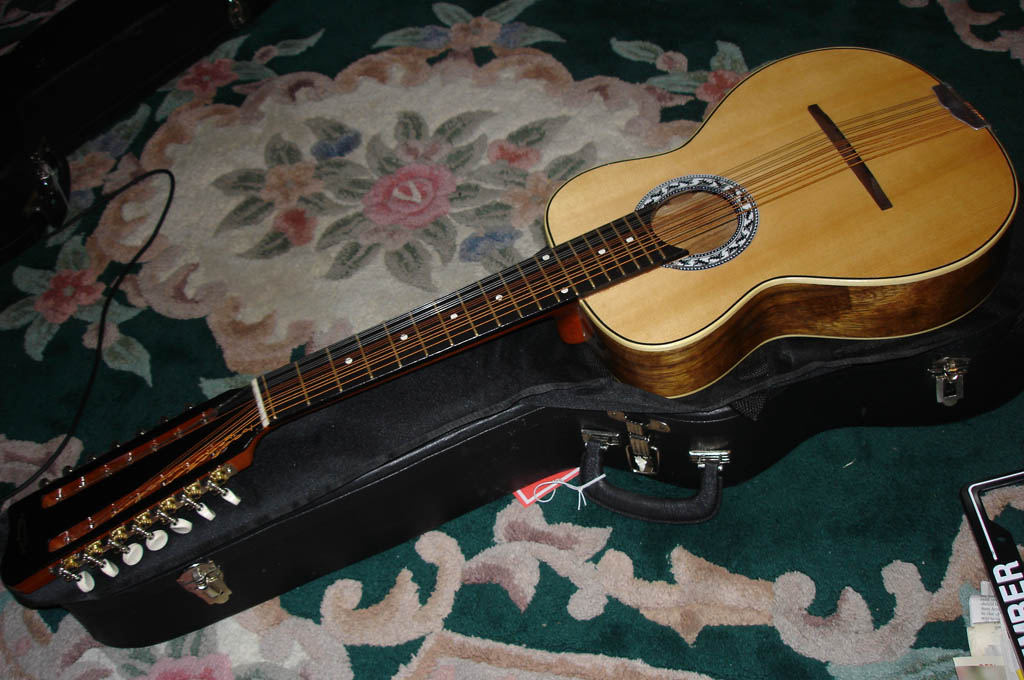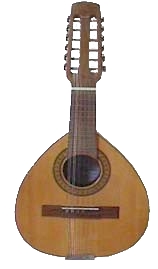Thursday 30 July 2015
Friday 10 July 2015
Philippine Rondalla
During the Spanish period in the East Indies, the rondalla was brought to the Philippines by the Spaniards. In the early Philippines, certain styles were adopted by the natives, especially guitar and banduria used in the Pandanggo, the Jota, and the Polka. The use of the term comparza was common, however, during the American period in the Philippines, the term rondalla became more used. At present, rondalla, in the Philippines, refers to any group of stringed instruments that are played using the plectrum or pick.[4]The Filipino instruments are made from indigenous Philippine wood and the plectrum, or picks, are made from tortoise-shell. Other stringed instruments composing the standard Filipino rondalla are the bandurria, the laúd, the octavina, the Twelve-string guitar, the Ukulele, the bajo de uñas or double bass, the Guitarrón mexicano, and other Filipino-made instruments modeled and developed after the guitar. The Philippine rondalla’s repertoire include folk songs such as the collar de sampaguita, la bella filipina, No te vayas a Zamboanga, Balitaw, the Kundiman, the "Zarzuela", the "Subli", the "Harana", the "Tinikling", and the "Cariñosa".
https://en.wikipedia.org/wiki/Rondalla#Philippines
The bandurria plucked chordophone from Spain, primarily used in Spanish Folk music, but also found in countries that were once colonies of Spain.
The modern bandurria has 12 strings (6 pairs). The strings are tuned in unison pairs, going up in fourths from the low G#. The lowest four strings are a major-third above those of a standard guitar and the highest two strings are a fourth above a standard guitar, i.e. G♯, c♯, f♯, b, e and a.

Laúd is a plectrum-plucked similar to the bandurria, but with a longer neck.
Traditionally it is used by folk string musical groups, such as the Filipino Rondalla string ensemble, together with the guitar and the bandurria. Like the bandurria, it is tuned in fourths, but its range is one octave lower.
The Filipino version has (from bass to treble) one single course, two double courses and three triple courses (i.e. fourteen strings), and is tuned a step lower, F# B E A D G.

The octavina or Philippine octavina is a guitar-shaped Filipino instrument with a tuning similar to the Laud. Originally a Spanish instrument, the octavina was soon incorporated into other cultures, notably including Filipino culture.
The Octavina has a set of 14 string in 6 courses: 6th-single, 5th-double, 4th-double, 3rd-triple, 2nd-triple and 1st-triple.It is numbered starting from the bottom. It is tuned similarly to that of the bandurria, but one octave lower, giving:
- 1st: G (sol)
- 2nd: G (sol)
- 3rd: G (sol)
- 4th: D (re)
- 5th: D (re)
- 6th: D (re)
- 7th: A (la)
- 8th: A (la)
- 9th: A (la)
- 10th: E (mi)
- 11th: E (mi)
- 12th: B (si)
- 13th: B (si)
- 14th: F# (fi)
Bajo de Uñas- a bass guitar which looks like a big guitar and is played by a
plectrum. It plays the bass part and serves as a rhythmic support.
plectrum. It plays the bass part and serves as a rhythmic support.
Harana (Spanish ‘jarana’) – serenade; traditionally sung by a young man to a
young woman outside the young woman’s house as a profession of his love
to her. usually accompanied by a guitar.
to her. usually accompanied by a guitar.
Kumintang- originally a war song, this song in triple time can be of any topic:
love, resentment, or a social commentary. It can also be a dance or a
combination of song and dance in this style.
Kundiman (kung hindi man) – an art song about the love of a man for a
woman but can also be about patriotic sentiments, the woman as an object of
love and sacrifice of the man representing the Philippines whose countrymen
are willing to do sacrifices for freedom. It usually starts in a minor key and
then goes to the major key.
Polka- a lively dance in duple time.
Pandanggo- originating from the fandango of Spain, it is a fast-paced dance
in triple time. Usually, dancers use accessories such as hats and lighted
candle in a glass
Rondalla- an ensemble of plucked instruments and sometimes with
percussion
Bandurria- 14-stringed pear-shaped lute with a round sound hole and played
with a plectrum, it plays the melody in the rondalla ensemble.
Laud- 14-stringed pear-shaped lute with f-shaped sound holes and played
with a plectrum, it plays the alto part or counter melody in the rondalla
ensemble. It is bigger than the bandurria.
with a plectrum, it plays the alto part or counter melody in the rondalla
ensemble. It is bigger than the bandurria.
Octavina- 14-stringed lute which is shaped like a small guitar and played with
a plectrum, it plays a counter melody or harmony fill-in in the rondalla
ensemble.
a plectrum, it plays a counter melody or harmony fill-in in the rondalla
ensemble.
Bajo de Uñas- a bass guitar which looks like a big guitar and is played by a
plectrum. It plays the bass part and serves as a rhythmic support.
plectrum. It plays the bass part and serves as a rhythmic support.
Saturday 7 February 2015
Tuesday 25 November 2014
Wednesday 12 November 2014
THE RHYTMIC MODES OF MAGUINDANAO
1. Binalig - general expression of feeling
____I_____I______I______I_______I_____ R.H.
______II______I______I_____II______II L.H.
2. Sinulog - expresses a feeling of sadness or sentiment
__I_______I________I__I__I_____I_______I______I_I__I______
______II______II_______I____II_____II______II____I_________
3. Tidtu - virtuosity
____________I___________I___________I____________I
_______I__________I___________I__________I_________
4. Tahunggo - rituals associated with Sagayan dance
_______I__________I___________I___________I_______
_______I____II_________II_____________I____I_______
Tuesday 11 November 2014
No te vayas
No te vayas, no te vayas de ZamboangaQue me puedes, que me puedes olvidarNo te vayas, no te vayas, ni me dejesQue yo sin ti, no puedo estar
No llores, paloma miaNo llores que volvereNo llores que en cuando lleguePaloma mia, te escribire
Con un pluma de aveY un pedazo de papelCon la sangre de mis venasPaloma mia, te escribire.
Here is an English translation of No te Vayas de Zamboanga (which is actually erroneous)
Don't you go, don't you go to far Zamboanga
Where you may forget your darling far away
Don't you go, don't you go, for if you leave me
How can I, without you stay?
Oh weep not, my dear Paloma
Oh weep not, for I'll return
Oh weep not, my little darling
I shall remember, and I shall yearn.
With a feather of a bird
And a piece of paper
With the blood from my veins
My little darling, I shall write to you.
No Te Vayas de Zamboanga was written by Juan Cuadrado, Sr., a Spaniard who decided to stay in Zamboanga after the Spanish soldiers left the country.
Accordingly, this song was used in a Zarzuela entitled De Cavite A Zamboanga. In this Zarzuela, a Cavitena sings this song to her boyfriend who is going to Zamboanga.
This was composed by Juan Cuadrado, Sr., a Spaniard who decided to stay in Zamboanga after the Spanish troops left the country. He later married a Zamboangueña with whom he bore several children. According to the old-timers of the city, this song was composed among the taverns which Cuadrado used to frequent. There was no real intention to write the song, for Cuadrado was not a musician. But when the heart was full, then it was only music that could express its real feelings. The song was popularized when a Colonel Loving placed it down in music. The words of the songs goes this way.
http://zamboanga.net/songsandmusiczamboangainsert.htm
Subscribe to:
Posts (Atom)





